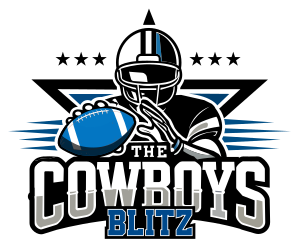NewsBot
New Member
- Messages
- 111,281
- Reaction score
- 2,947

The Cowboys linebacker has a neck issue he was born with.
Yesterday, Cowboys head coach Jason Garrett announced that linebacker Leighton Vander Esch would have surgery on his neck and that the team was putting him on injured reserve. Vander Esch initially hurt the neck in Week 7 of this season and has basically been sidelined since then. The Cowboys and Vander Esch were hoping rest and treatment would fix the problem, but after an MRI was performed, the plan changed to surgery which will happen this January.
So what is exactly wrong with Vander Esch? Cervical spinal stenosis is the medical term, it means a narrowing of the spinal cord. Vander Esch has a bulging disk in his neck and that combined with his stenosis has led to surgery.
“From what the doctors say, I was born with stenosis,” Vander Esch said following Sunday’s 17-9 loss to the Philadelphia Eagles. “So it’s something you’ve got to deal with. Nothing was bothering me until I got hit in Week 7. I’ve got a new set of pads being built, and I’ve been running and practicing in those. So it feels good. ... We were just saving up for playoffs hopefully, but it’s out of my control.”
That comment from Vander Esch came before the decision to have surgery so there won’t be any “saving up for the playoffs” even if the Cowboys somehow miraculously make the playoffs.
Heading into the 2018 draft, NFL teams were aware of the issue with his neck. The Cowboys went ahead and used their first-round pick on him and for a year and a half it all seemed okay. This surgery and recovery is not considered career-threatening, but there could be concern if this happens again. People with spinal stenosis are prone to more pain from bulging or herniated disks. Multiple surgeries are when things can get dicey.
The Dallas Morning News spoke to a doctor, Dr. Neel Anand, with a long history of dealing with this issue in athletes. He hasn’t examined Vander Esch, but has dealt with similar problems in other athletes. His response:
To undergo this neck surgery once is one thing.
Should it be done again, Anand said, a serious conversation about Vander Esch’s career would be required. Essentially, the January surgery is significant because it removes an important buffer between Vander Esch and a second neck surgery that would mandate a hard look at retirement.
“If it happens again, I’m quite sure it would be a good idea not to play,” Anand said in a recent phone interview. “You’re risking the spinal cord. At the end of the day, your spinal cord takes precedence over any amount of athleticism or whatever incentives are involved. It is your spinal cord. So I think if you get it the second time around, most people would advise not to play. The risk is just too much. ... Nobody wants a spinal cord injury. No.”
Of course, the Cowboys and Vander Esch may think differently. They have examined the neck and looked at the MRI, and they know the details of this particular surgery. At a distance, it’s sometimes hard to know exactly what is going on. Still, it seems likely that Vander Esch is more at risk for a career-ending injury than other players. That doesn’t mean it will ever come to that, but it will always be there as a possibility.
All we can do is hope for the best. When Vander Esch is right and playing well, he is a special talent. We saw that in his rookie year. Hopefully he is back to that in 2020.
Continue reading...

